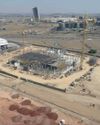When a share price suddenly goes into freefall, investors scramble to get out of their holdings. But the question that’s top-of-mind is always the same: Why did it happen? Factors range from a company’s underlying fundamental indicators, to over-arching market sentiment. How can investors spot a bad stock before it’s too late?

Seeing the price of a prized share drop by between 80% and 90% over the commonly advised medium term will lead to the inevitable question: Why didn’t I see it coming? Various South African “solid stocks” went through such drops over the past couple of years – leaving heavily invested retirement funds and retail investors alike in a world of pain. Not to mention those listed companies that succumbed to corporate governance issues (PR-talk for unethical behaviour and sometimes outright fraud). The latter is far harder to spot.
How do you avoid the future losers?
“At its most basic level share prices tank when there is a significant difference between expectations and reality,” says Jean Pierre Verster, founder and CEO of Protea Capital Management. “Especially when investors realise their expectations are not aligned with reality. Therefore, their expectations need to adjust. When their expectations suddenly need to adjust downward because they realise that reality is not as optimistic as they thought, it leads to a share price that tanks.”
Expectations were realigned in various local companies over the past couple of years. Fertilisermaker Omnia’s share price dropped by more than 85% over the past five years through 30 July. Aspen Pharmacare slumped by 69% over the same period. Information technology company EOH, with sales of over R16bn in its last fiscal year, plummeted more than 80% over the past five years – with almost half of the decline since the beginning of this year.
Sugar and starch producer Tongaat Hulett fell 91% over the past five years and had trade in its shares suspended on 10 June.
Then, of course, there’s Steinhoff. It destroyed 98% of shareholders’ value due to the misstatement of financial performances and asset values over many years.
These companies are well-known and wellresearched corporates.
Esta historia es de la edición 15 August 2019 de Finweek English.
Comience su prueba gratuita de Magzter GOLD de 7 días para acceder a miles de historias premium seleccionadas y a más de 9,000 revistas y periódicos.
Ya eres suscriptor ? Conectar
Esta historia es de la edición 15 August 2019 de Finweek English.
Comience su prueba gratuita de Magzter GOLD de 7 días para acceder a miles de historias premium seleccionadas y a más de 9,000 revistas y periódicos.
Ya eres suscriptor? Conectar

THE HEALTH OF SA'S MEDICAL SCHEMES
As the Covid-19 pandemic abates, finweek takes a look at the financial performance of some of the largest players.

The effect of Gilbertson's departure
With Ntsimbintle Holdings now the major shareholder of Jupiter Mines, it could change SA’s manganese industry.

Making money from music
Why investors are increasingly drawn to the music industry.

Conviction is key
Sandy Rheeder plays a critical role in Mukuru’s mission to open up financial services to the emerging consumer market in Africa through tailor-made technology solutions and platforms.

The post-pandemic toolkit
How CFOs can use technology to support growth.

Big city living exodus
Mini cities like Waterfall City and Steyn City are redefining city-style apartment living.

Big compact, big value
Handsome, with a hefty level of standard specification, the roomy Haval Jolion compact crossover is a great value proposition.

On barriers to entry
There are various ways in which a company or sector can achieve competitive dominance. They usually make for good investments.

Fear and greed in one index
To buck the trend, when markets are hot or cold, is a tough thing to do. However, it can deliver solid returns.

Africa's largest data centre facility coming soon
Vantage Data Centers plans to invest over R15bn for its first African data centre facility in Attacq’s Waterfall City.